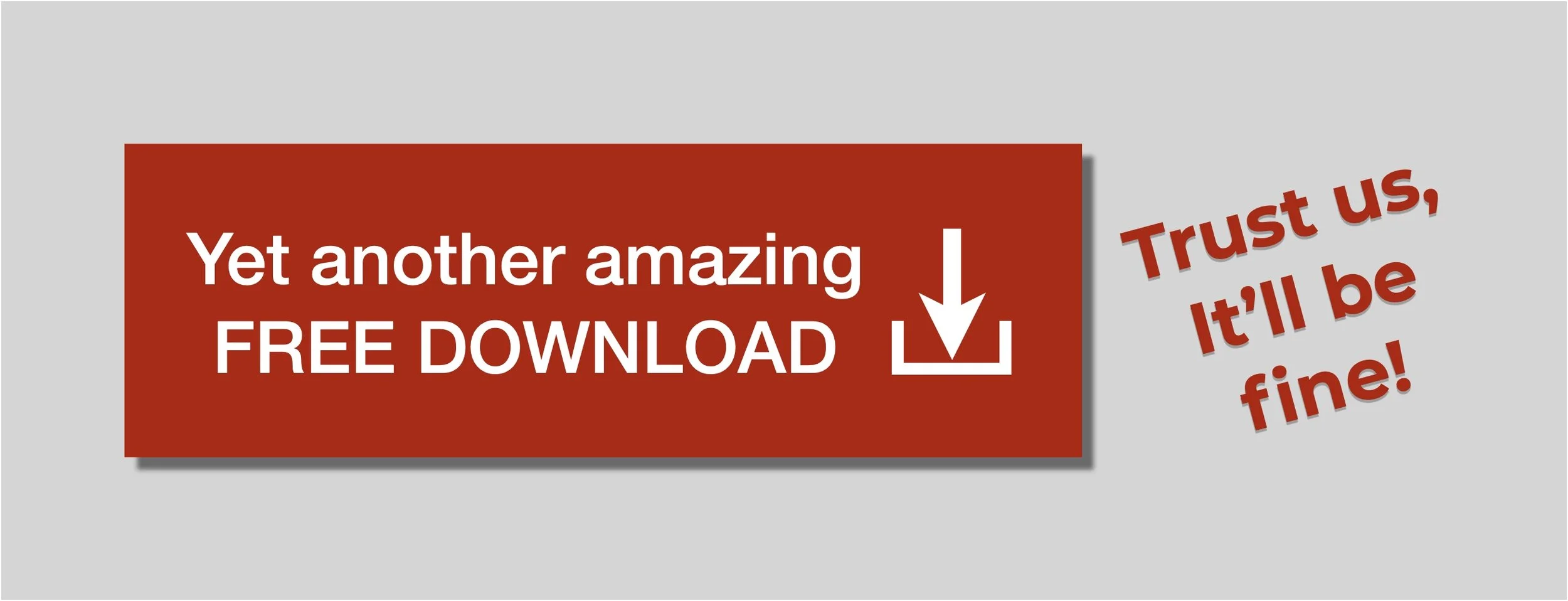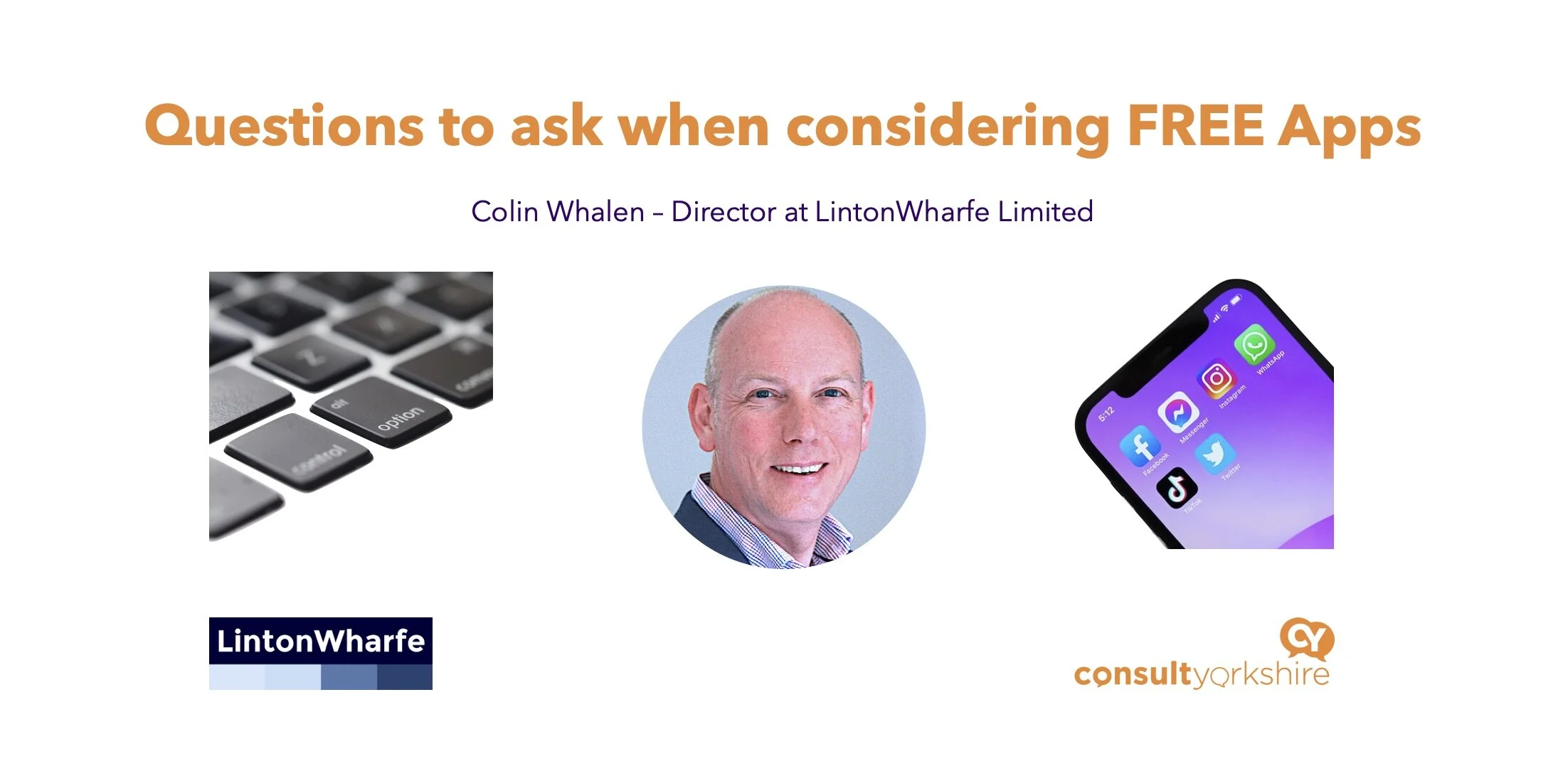Questions to ask when considering FREE Apps
/A five-minute read – Yes, I used a free web app to work that out!
Just today I have used Google’s Gmail and search services, Canva’s colour wheel tool, an online time zone converter, Facebook, Instagram, and a web app to estimate the reading time for this article—all for FREE!
But why are they free? Maybe we need a little more critical thinking before we yield to free digital temptation.
Here are four questions I ask myself when considering free software—the last one might surprise you!
1. Do I really need it?
I already have a ton of apps and bookmarked web services in my digital life; do I really need something new? It is so easy to be tempted by some shiny new thing with an attractive “FREE” price tag. So before I add to my digital clutter, I force myself to stop and think: is this app going to meet some unfulfilled need, can it really be better than something I already use, in short … is it going to be of real value to me?
Sometimes, I decide it is worth investigating or even trialing for while, but more often than not I come to my senses and move on to other more useful things.
2. Do I understand the bargain I am making?
In almost all cases there is some form of bargain being made between myself and the free software provider. I think it is important to understand what the bargain being made actually is, and I need to be comfortable with it.
In some cases, I understand that I will be targeted with online ads that my online activity and personal profile suggest I will be susceptible to—think Facebook, Google Search, and many, many ad-supported websites. On the whole, I am usually comfortable with this particular bargain and tend to prefer targeted rather than random ads, even if it did take Facebook’s algorithms a little time to decide I was not actually interested in ecclesiastical garments.
Sometimes I need to provide my email address to gain access to a free app or online service. I try to be a bit more wary in these cases and like to be confident that my email address will be used reasonably, not shared, and that I will be able to unsubscribe from the inevitable sales emails to follow.
I might gain access to a free time-limited trial or a reduced version of the full paid-for app, or perhaps I get a genuinely great online service such as Google’s Gmail, whilst being tempted to upgrade to a more powerful paid-for service. Again, I should expect to be sold to, but this can be a useful way to evaluate an app before parting with any money or deciding if the free version will suffice. I just need to remember that I have no real right to complain if and when I find the free version and its support to be below par.
Whatever the source and type of free software, I recommend you spend some time thinking about the bargain you are entering into—if the bargain is unclear or makes you feel unsure or uncomfortable, move on and leave the free offer behind.
3. Do I trust the source?
Even if I have convinced myself that I need the free app and that I understand the bargain I am making in exchange, it is so important in our digital world to trust the source if we are to stay safe and secure and avoid some form of scam or attack instead of that free download we are hoping for. Just because a website says it is providing a free version of a snazzy new app does not mean it actually is.
First, I prefer to download any free apps from a trusted app store, in my case I use Apple’s, Mac and iOS App stores, where there is at least some form of gateway that the provider has to get through to get their app in the store.
Second, and especially true if I am not using a trusted app store, I need to trust the publisher. This is easier if the app is coming from a big-name software provider, but if not I need some social proof or recommendation to convince me, and this is always best if it is coming from someone I trust.
Finally, and critical if I am not using a trusted app store, I make sure any free downloads come from the actual software provider. So if I decide to download the free Adobe Reader app, I make sure it is coming from adobe.com and not one of the many other sources – some of these will be fine, but I have no effective way of knowing.
If you are not sure and confident of the source of any free downloads then move on—it is not worth the risk.
4. Should I really be paying for it?
If the value of the free app or service is so great that it becomes part of my digital work or life, then—and depending on the bargain—I consider whether I should be paying for it … but why would I do that?
If the app really is valuable to me, I want to recognise that value and the costs of development and support of the software that I rely on, especially if the provider’s business model relies on income from paid versions rather than advertising. I do not want support and ongoing improvement to disappear for an app that I rely on; I want to support the provider and my on-going use.
For example, I started with and I could probably manage very well with the free version of LastPass—my password manager app that helps keep me safe online. But this app is so important and valuable to my online security that I have decided it is right for me to pay for it.
If you choose to rely on free apps, be aware that there are no guarantees that it will always be free and that it will always be there for you—paid for apps last longer.
By all means, do take advantage of the world of free software, but do so with your eyes open and after thinking it through.
And do let me know, which are your favourite free apps.
Click to eMail Colin Whalen, Director at LintonWharfe Limited
Image credits: Mac Keyboard by Jess Bailey, iPhone by Jeremy Zero; both on Unsplash.




